Abstract
BACKGROUND: Electrocardiographic (ECG) differences occur between African-American and Caucasian patients. METHODS: The study includes ECGs of 2,123 patients, ages 20-99 years attending an urban hospital. RESULTS: First-degree atrioventricular (AV) block was more prevalent in African-American patients compared with Caucasian patients in all age groups of the study except for those patients in the eighth decade of life. The prevalence of first-degree AV block began to increase at age 50 years in both ethnic groups and gradually increased with advancing age, peaking in African-American patients in the 10th decade of life, and in Caucasian patients in the ninth decade of life. The continuing increase in first-degree AV block in African-American patients in the 10th decade of life suggests increasing impairment but greater durability of the AV conduction system in African-American compared with Caucasian patients. The dramatic decline of the prevalence of first-degree AV block in Caucasian patients in the 10th decade of life suggests more frequent failure of the AV conduction system in this group of patients at ages 90-99 years, compared with African-American patients in the same age group. In population-based surveys, first-degree AV block was more prevalent in African-American subjects compared with Caucasian subjects.
Full text
PDF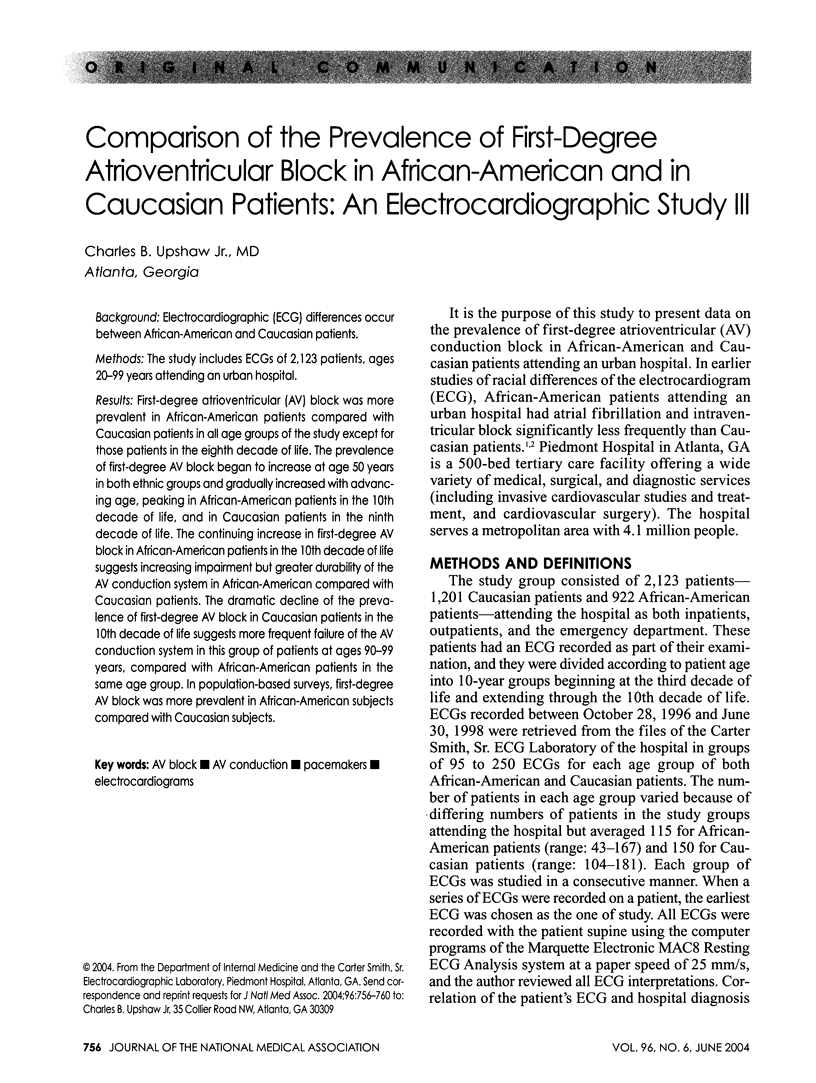
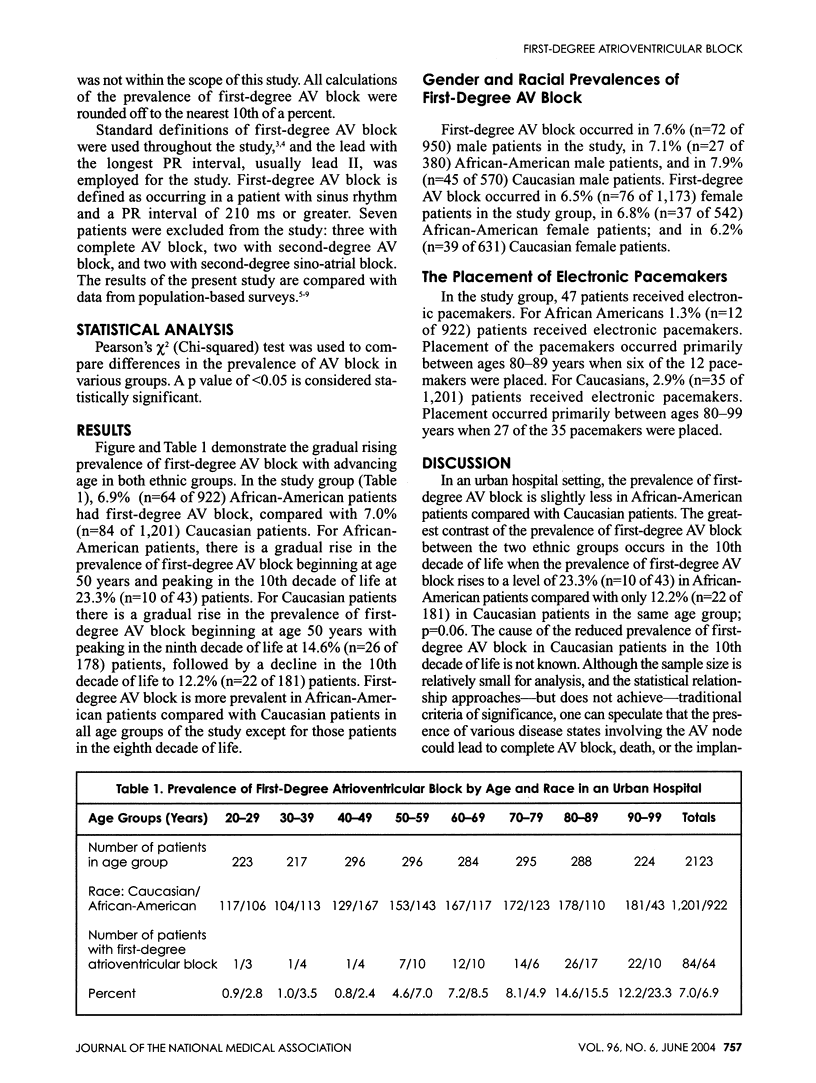
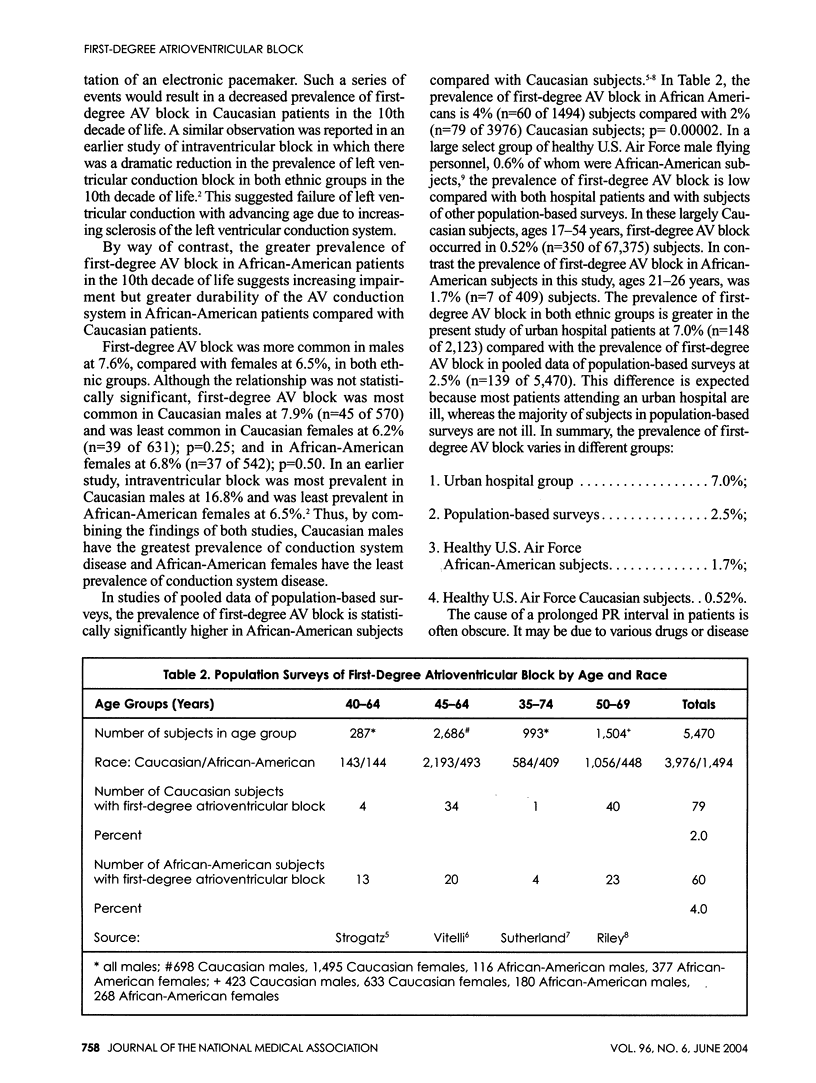
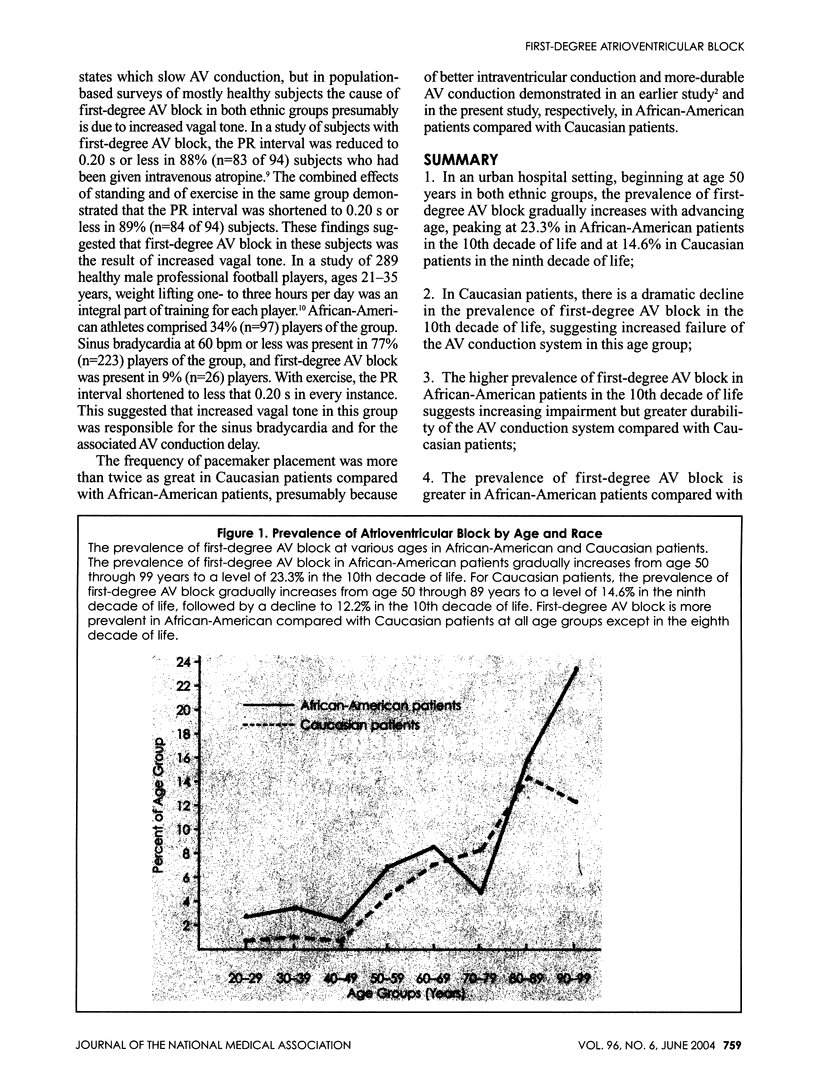
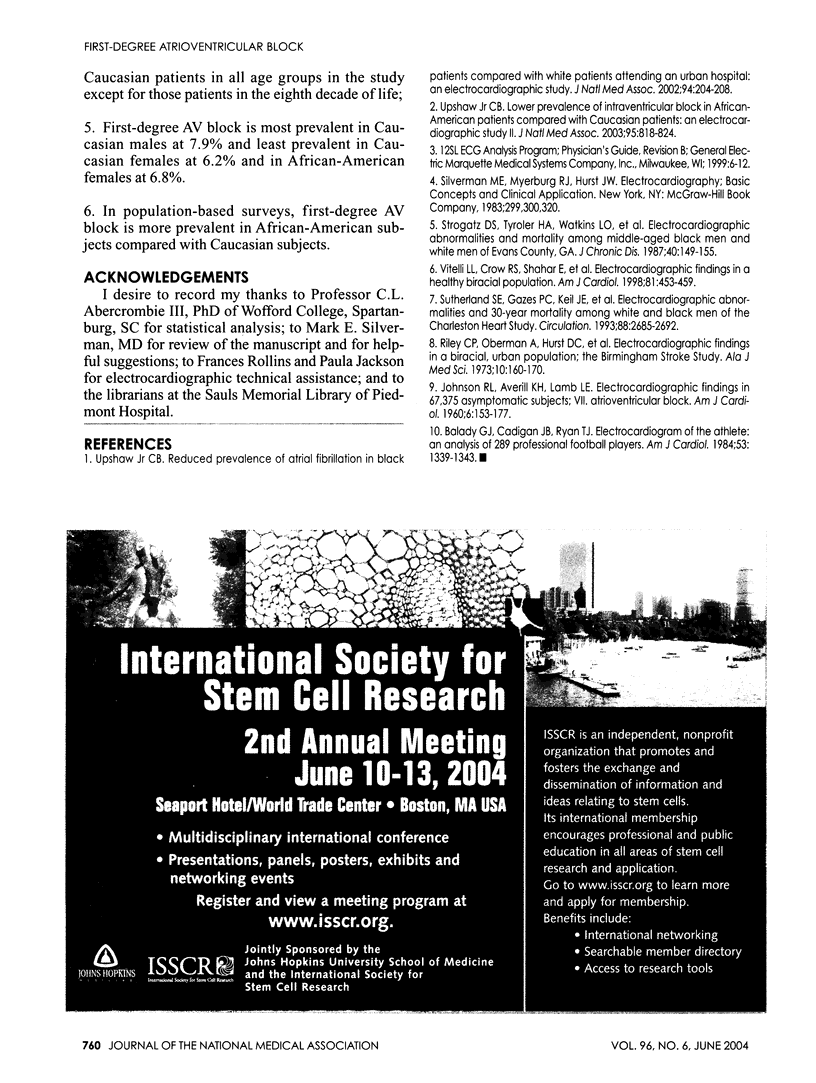
Selected References
These references are in PubMed. This may not be the complete list of references from this article.
- Balady G. J., Cadigan J. B., Ryan T. J. Electrocardiogram of the athlete: an analysis of 289 professional football players. Am J Cardiol. 1984 May 1;53(9):1339–1343. doi: 10.1016/0002-9149(84)90090-0. [DOI] [PubMed] [Google Scholar]
- Riley C. P., Oberman A., Hurst D. C., Peacock P. B. Electrocardiographic findings in a biracial, urban population. The Birmingham Stroke Study. Ala J Med Sci. 1973 Apr;10(2):160–170. [PubMed] [Google Scholar]
- Strogatz D. S., Tyroler H. A., Watkins L. O., Hames C. G. Electrocardiographic abnormalities and mortality among middle-aged black men and white men of Evans County, Georgia. J Chronic Dis. 1987;40(2):149–155. doi: 10.1016/0021-9681(87)90066-x. [DOI] [PubMed] [Google Scholar]
- Sutherland S. E., Gazes P. C., Keil J. E., Gilbert G. E., Knapp R. G. Electrocardiographic abnormalities and 30-year mortality among white and black men of the Charleston Heart Study. Circulation. 1993 Dec;88(6):2685–2692. doi: 10.1161/01.cir.88.6.2685. [DOI] [PubMed] [Google Scholar]
- Upshaw Charles B., Jr Lower prevalence of intraventricular block in African-American patients compared with Caucasian patients: an electrocardiographic study II. J Natl Med Assoc. 2003 Sep;95(9):818–824. [PMC free article] [PubMed] [Google Scholar]
- Upshaw Charles B., Jr Reduced prevalence of atrial fibrillation in black patients compared with white patients attending an urban hospital: an electrocardiographic study. J Natl Med Assoc. 2002 Apr;94(4):204–208. [PMC free article] [PubMed] [Google Scholar]
- Vitelli L. L., Crow R. S., Shahar E., Hutchinson R. G., Rautaharju P. M., Folsom A. R. Electrocardiographic findings in a healthy biracial population. Atherosclerosis Risk in Communities (ARIC) Study Investigators. Am J Cardiol. 1998 Feb 15;81(4):453–459. doi: 10.1016/s0002-9149(97)00937-5. [DOI] [PubMed] [Google Scholar]


